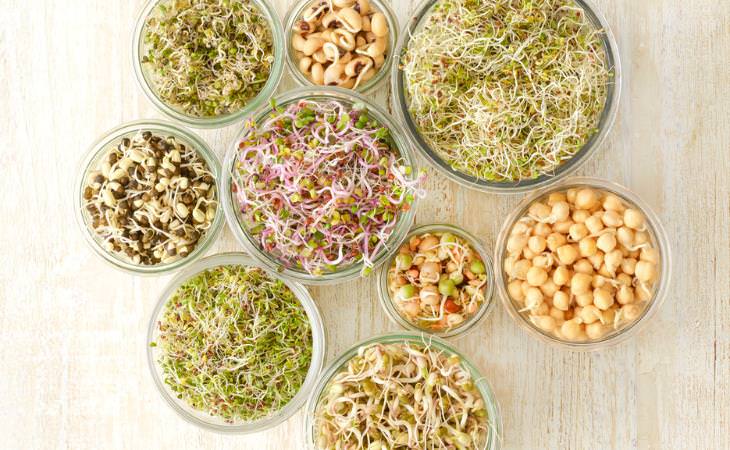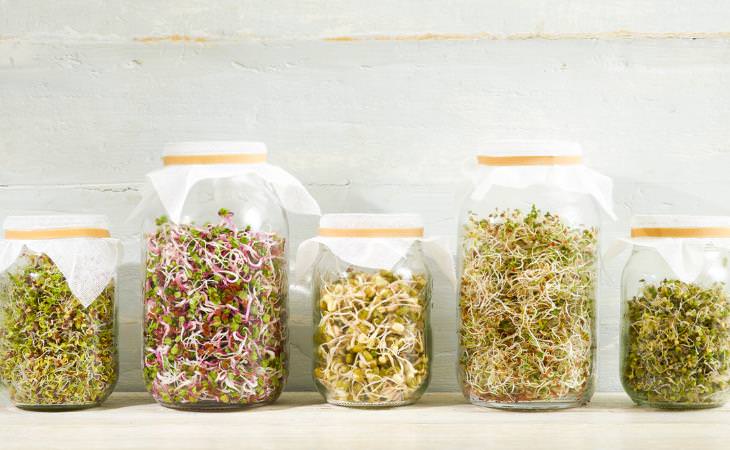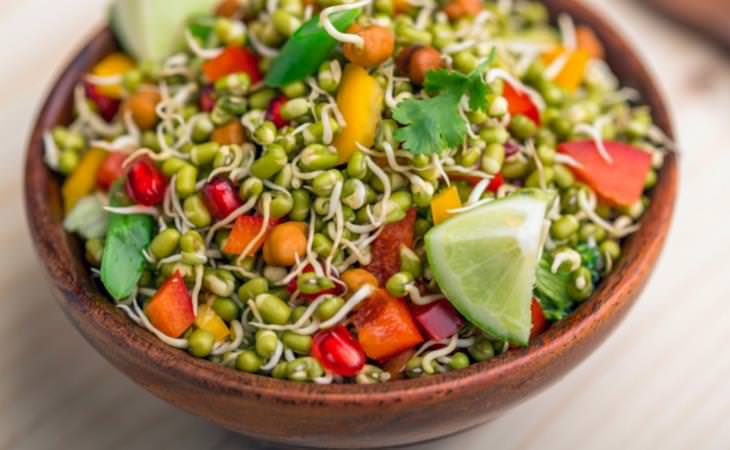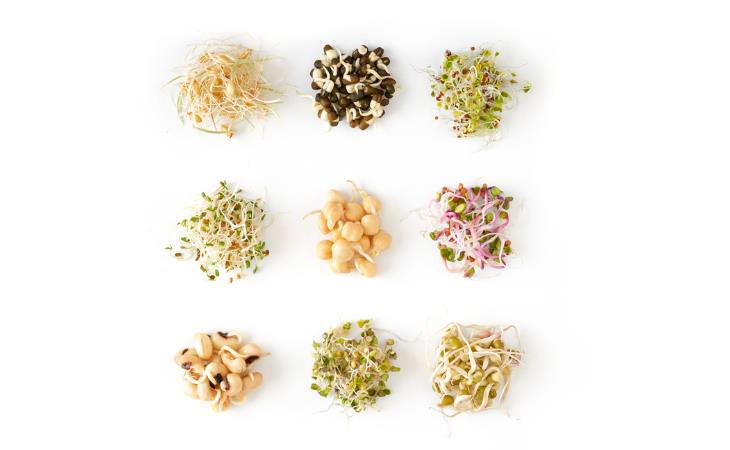Sprouts are the germinated seed of a
vegetable. They are baby plants on their first step to becoming
full-grown plants: just starting to grow a root. Their nutritional
values are much higher now than they were when they were seeds. Growing
them at home is easy, cheap, and quick: it can even take as little as
two days. And they're a good source of fiber. Who doesn't want some
fiber?
Kinds of Sprouts




As any seed sprouts to become a plant,
there are many many kinds. They're usually divided into 4 categories:
Legumes: mung bean, kidney bean, black bean, lentils, and snow pea
sprouts.
Vegetables: broccoli, alfalfa, mustard green, and red clover
sprouts.
Nuts and seeds: pumpkin seeds, sesame seeds, and sunflower seeds
sprouts.
Grains: wheatgrass and quinoa sprouts.
Of course, this is only a partial list, but for starters - it's more
than enough. The most common ones that you've probably tried before are
alfalfa, mung bean, red clover, and broccoli sprouts.
A little misconception about Brussels sprouts: despite their name, they
are not sprouted seeds, of course. They're a full-grown veggie, who's
close relatives with cabbage, kale, broccoli, and cauliflower.
Nutritional Values


These are nutrition bombs! This comes as no
surprise when you think about it: not long ago they were just "newborn"
seeds, they are packed with all the nutrients a baby plant will need in
order to become a strong mature plant. Let's inspect then.
They contain a plethora of vitamins, minerals, antioxidants, and fiber.
Broccoli sprouts, for instance, are a good source of Vitamins A, C, K,
folic acid, and the antioxidant sulforaphane. Moreover, they are low on
fat, sodium, and calories.
For people who suffer from diabetes type 2, sprouts will help regulate
their blood sugar levels. Researchers are still not sure why, as various
experiments showed different reasons for this effect.
Sprouts also may reduce risk factors for heart disease, such as high
blood cholesterol levels.
But here's the catch. They grow in the same conditions bacteria thrive
in, warm humid climate. Even if your sprouts are contaminated, the
symptoms aren't lethal. That doesn't mean we shouldn't avoid them still.
We have some sanitation instructions down below for when you grow your
own sprouts. If you'd like to purchase sprouts from the store instead of
making your own, make sure you choose a transparent and trusted
supplier. In any case, you should always wash the sprouts and your hands
thoroughly.
Children, pregnant women, the elderly, and people with generally weaker
immune systems are recommended to thoroughly cook sprouts.
How to Grow at Home

Sprouts grow easily and quickly and they
don’t rely on soil or sun.
You'll need:
-Big jars with a wide enough opening.
-Cheesecloth.
-Rubber band.
-Your seeds of choice.
Purchase seeds that are specifically for
sprouting; they will be labeled.
Method:
1. Sanitize your work area. Wash your hands. Keep your pets out of the
kitchen.
2. Sanitize the jars and lids thoroughly with boiling water.
3. Wash the seeds, place 2 tbs in the jar, and cover with a few inches
of water. Make sure the seeds take no more than 1/4 of the jar, as they
will expand significantly.
4. Cover with the cheesecloth and secure with a rubber. Let sit for 8-12
hours at room temperature.
5. Drain, rinse and drain again. Place the jars upside-down, but at an
angle to allow drainage and air-circulation through the mesh. A small
bowl is a good solution for that.
6. Rinse and drain the seeds between two and four times a day, making
sure that they never dry out completely.
7. Harvest after 3 to 7 days.
All sprouts can be eaten raw, and all but the most delicate (like
alfalfa) can be gently cooked as well. Once you've got your sprouts,
keep them in the fridge.
Some Recipes

Sprouts are a good additive to almost any
meal. You can boil them, oven-roast or steam. If you use them raw they
are a great additive to salads and sandwiches. You can use them to
upgrade your bagged salad mix.
Or enjoy a classic stir-fried dish